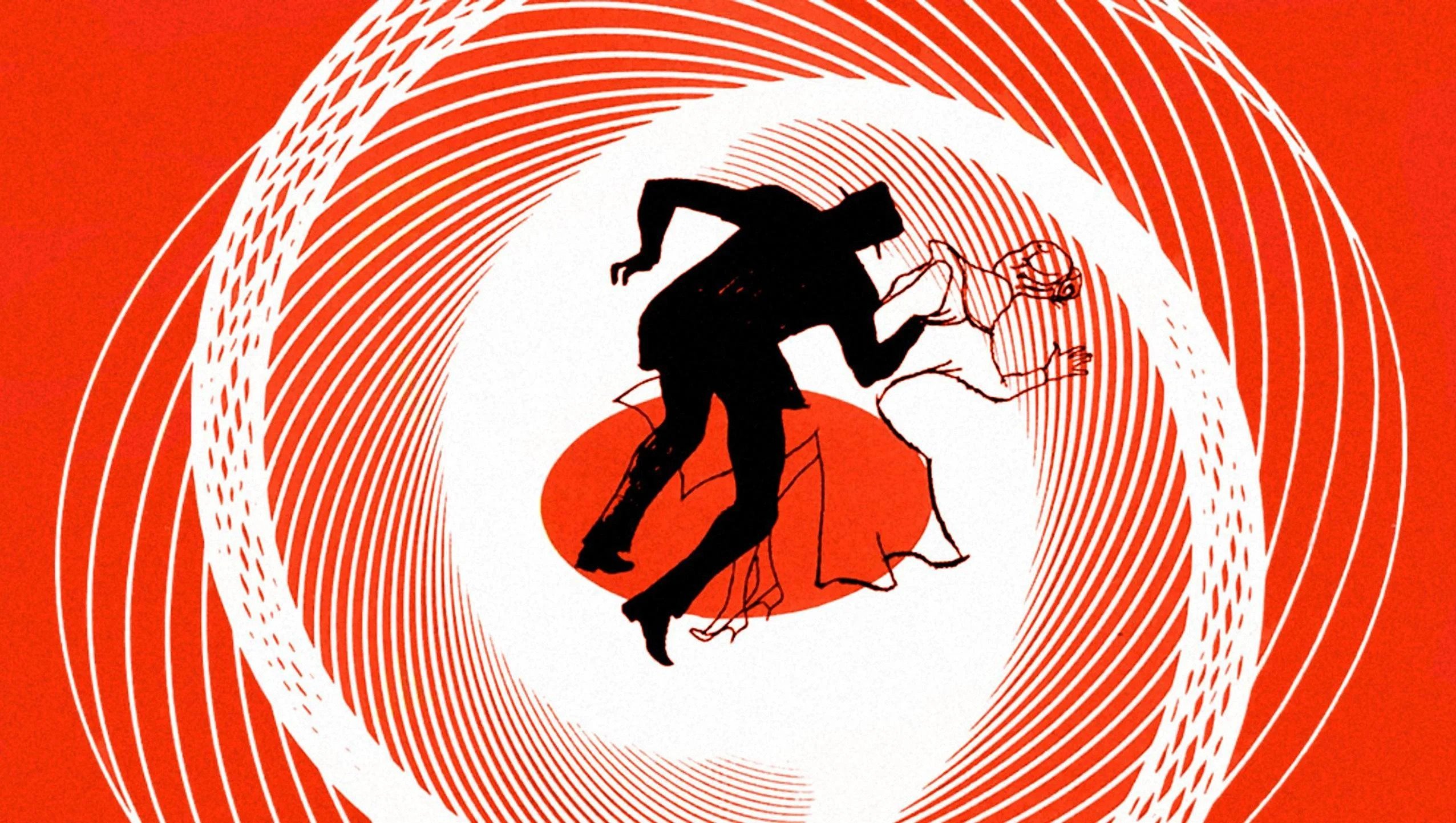
Are you a fan of movies that keep you on the edge of your seat? If so, then Alfred Hitchcock’s iconic masterpiece, Vertigo, is a must-watch. Released in 1958, Vertigo has since become a timeless classic that continues to captivate audiences with its suspenseful storyline and stunning cinematography. In this article, we will delve into the enigmatic world of Vertigo and uncover 48 fascinating facts about the film that you may not be aware of. From the intricate plot twists to the behind-the-scenes anecdotes, prepare to be intrigued by the secrets and revelations that surround this cinematic gem. So, grab your popcorn, settle into your favorite armchair, and get ready to explore the captivating world of Vertigo like never before!
Key Takeaways:
- Vertigo” is a classic movie directed by Alfred Hitchcock, known for its suspenseful storytelling and stunning visuals. Despite initial mixed reviews, it has since been hailed as a cinematic masterpiece.
- The film explores themes of obsession, manipulation, and the dangers of idealization. With its intricate plot and haunting atmosphere, “Vertigo” continues to captivate audiences and inspire filmmakers.
Vertigo was directed by Alfred Hitchcock.
Considered one of the greatest directors in cinema history, Alfred Hitchcock brought his unique style and storytelling techniques to this psychological thriller.
The movie was released in 1958.
Vertigo debuted in theaters on May 9, 1958, captivating audiences with its suspenseful narrative and stunning visuals.
James Stewart played the lead role.
The legendary James Stewart portrayed the character of John “Scottie” Ferguson, a retired detective with a fear of heights.
Kim Novak was the female lead.
Kim Novak starred as Madeleine Elster and Judy Barton, two women who Scottie becomes obsessed with throughout the film.
The movie was based on the novel “D’entre les morts.”
Vertigo drew inspiration from Pierre Boileau and Thomas Narcejac’s novel “D’entre les morts” (From Among the Dead).
It was nominated for two Academy Awards.
Vertigo was nominated for Best Art Direction and Best Sound, but ultimately did not win in either category.
Vertigo received mixed reviews upon its initial release.
Despite its eventual status as a cinematic masterpiece, the film initially received a lukewarm response from critics.
The movie’s score was composed by Bernard Herrmann.
Bernard Herrmann’s haunting and memorable score perfectly captured the tone and atmosphere of the film.
Vertigo was a box office disappointment.
Despite its critical acclaim, the movie did not perform well commercially during its initial release.
The famous “Vertigo effect” was created for the film.
Hitchcock and his team developed a unique camera technique known as the “Vertigo effect” to visually represent Scottie’s fear of heights.
The Empire State Building scene was filmed in a studio.
The iconic scene where Scottie and Judy visit the Empire State Building was actually filmed on a recreated set rather than on location.
Vertigo was restored in 1996.
The film underwent an extensive restoration process in 1996 to preserve its original quality for future audiences to enjoy.
The movie has been praised for its cinematography.
Vertigo is often lauded for its stunning cinematography, with various shots and angles adding to the film’s suspense and visual impact.
The title refers to a sensation of dizziness.
The term “vertigo” is a medical condition characterized by a feeling of spinning or dizziness, which relates to Scottie’s fear and his mental state throughout the film.
Vertigo is considered one of Hitchcock’s best films.
Over time, Vertigo has gained recognition as one of Alfred Hitchcock’s finest achievements, and it consistently appears on lists of the greatest movies ever made.
The movie explores themes of obsession and manipulation.
Vertigo delves into the psychological complexities of obsession and the ways in which people can be manipulated.
It was not a commercial success upon its release.
Despite its critical acclaim, Vertigo did not resonate with audiences at the box office, resulting in financial disappointment for the studio.
The iconic bell tower scene was filmed at Mission San Juan Bautista.
The climactic scene where Scottie confronts his fear of heights atop a bell tower was shot at the Mission San Juan Bautista in California.
Vertigo has been analyzed extensively by film scholars.
The complex narrative and layered themes of the film have led to numerous studies and academic discussions, further cementing its status as a cinematic masterpiece.
The movie was ahead of its time.
With its intricate narrative structure and exploration of psychological depth, Vertigo was considered ahead of its time and paved the way for future psychological thrillers.
Vertigo was not initially a box office success.
Despite its eventual recognition as a classic, the film struggled to connect with audiences during its original theatrical run.
The spiral motif is a recurring visual element in the film.
Hitchcock incorporated the spiral motif throughout Vertigo, symbolizing the spiraling descent into obsession and madness.
The movie has a dreamlike quality.
Vertigo blurs the line between reality and imagination, creating an eerie and dreamlike atmosphere that enhances its psychological themes.
Hitchcock made a cameo appearance in the film.
As with many of his movies, Alfred Hitchcock made a brief cameo appearance in Vertigo, appearing as a passerby outside a shipyard.
The movie was a critical success upon its re-release.
After initially receiving mixed reviews, Vertigo gained widespread acclaim when it was re-released in the late 1970s and has since been hailed as a masterpiece.
The movie explores the pitfalls of idealization.
Vertigo delves into the dangers of idolizing and idealizing individuals, highlighting the potentially destructive consequences that can result from such obsessions.
The original cut of Vertigo ran over two hours.
Alfred Hitchcock’s original version of the film had a runtime of two hours and eight minutes, but studio executives insisted on trimming it down.
The movie’s themes resonate with audiences to this day.
Despite being over six decades old, Vertigo’s examination of human relationships, identity, and obsession continues to captivate modern audiences.
The critical reception of Vertigo has improved over time.
While initially met with mixed reviews, the film has since garnered widespread acclaim and is now hailed as one of the greatest movies ever made.
Vertigo was based on a French novel.
The inspiration for Vertigo came from the French novel “D’entre les morts” (From Among the Dead) by Pierre Boileau and Thomas Narcejac.
The movie was a departure from Hitchcock’s previous works.
Vertigo marked a departure from Alfred Hitchcock’s usual suspense thrillers, showcasing a more introspective and psychological side of his filmmaking.
Hitchcock originally wanted Vera Miles to play the female lead.
Initially, Alfred Hitchcock wanted Vera Miles to star in Vertigo, but due to her pregnancy, the role was given to Kim Novak.
The movie’s plot twists and turns keep viewers guessing.
Vertigo is famous for its intricate and surprising plot twists, which keep audiences on the edge of their seats from beginning to end.
Vertigo was a critical success in Europe.
While the film struggled at the American box office, it was well received by European audiences and garnered numerous accolades overseas.
The character of Scottie Ferguson is haunted by past trauma.
Scottie’s fear of heights and subsequent obsession stem from a traumatic incident he experiences during the opening of the film.
The movie’s iconic poster features a spiral design.
The poster for Vertigo prominently features a spiral design, hinting at the psychological journey the audience is about to embark on.
Vertigo has influenced countless filmmakers.
The innovative techniques and complex storytelling of the film have inspired generations of filmmakers who continue to draw inspiration from Hitchcock’s masterpiece.
The themes of identity and transformation are central to the movie.
Vertigo explores the ways in which identities can be manipulated and transformed, blurring the lines between reality and fantasy.
Vertigo was a commercial failure upon its release.
Unfortunately, despite its critical acclaim, Vertigo failed to attract a large audience and was considered a financial disappointment.
The film’s screenplay went through multiple revisions.
The script for Vertigo underwent several revisions before arriving at the final version, with contributions from various screenwriters.
The movie’s haunting tone is enhanced by its atmospheric locations.
Vertigo was filmed on location in San Francisco, providing a backdrop of iconic landmarks and a brooding atmosphere that adds to the film’s haunting tone.
Vertigo received a 4K restoration in 2018.
In celebration of its 60th anniversary, Vertigo underwent a meticulous 4K restoration process to ensure its visual brilliance for future audiences.
The movie has been analyzed for its exploration of gender dynamics.
Vertigo’s portrayal of female characters and its themes of control and manipulation have sparked discussions around gender dynamics and power imbalances.
The famous dolly zoom effect was used in Vertigo.
The dolly zoom, also known as the “Vertigo effect,” was first showcased in this film and has since become an iconic visual technique in cinema.
The movie’s intricate plot requires multiple viewings to fully appreciate.
With its complex narrative structure and layers of symbolism, Vertigo rewards viewers who revisit the film, uncovering new details and insights with each viewing.
Vertigo was not initially well-received by audiences.
Upon its release, the film struggled to connect with audiences, but its reputation grew over time, solidifying its status as a masterpiece.
The movie’s use of color symbolism adds depth to its storytelling.
Hitchcock strategically employs color symbolism throughout Vertigo, enhancing the emotional impact and subtext of the narrative.
Vertigo has been hailed as one of the greatest films of all time.
With its richly layered storytelling, breathtaking visuals, and exploration of complex themes, Vertigo continues to be celebrated as a masterpiece and a defining work in cinema history.
Conclusion
In conclusion, Vertigo is a timeless masterpiece that continues to captivate audiences with its intriguing plot, stunning visuals, and unforgettable performances. Whether you’re a fan of Hitchcock or simply a lover of cinema, this film is a must-watch. With its complex characters and psychological twists, Vertigo has solidified its place in film history as one of the greatest movies ever made. Make sure to add it to your watchlist and prepare to be mesmerized by its brilliance.
FAQs
1. What is the plot of Vertigo?
The plot of Vertigo revolves around a retired detective who is hired to follow a friend’s wife, whom he believes is possessed by a spirit. As he becomes obsessed with her, he uncovers a dark mystery that holds shocking revelations.
2. Who stars in the movie Vertigo?
Vertigo stars James Stewart as Detective John “Scottie” Ferguson and Kim Novak as Madeleine Elster/Judy Barton. They both deliver mesmerizing performances that add depth to their complex characters.
3. When was Vertigo released?
Vertigo was released in 1958 and was directed by the legendary filmmaker Alfred Hitchcock.
4. What makes Vertigo a significant film?
Vertigo is considered significant for its innovative camera techniques, stunning cinematography, and exploration of themes such as obsession, identity, and manipulation. Its influence can be seen in numerous films that followed.
5. Has Vertigo won any awards?
Although Vertigo was not a commercial success at the time of its release, it has since gained widespread critical acclaim. It was nominated for two Academy Awards but did not win any. However, its reputation has grown over the years, and it is now regarded as one of Alfred Hitchcock’s greatest achievements.
Vertigo's enduring legacy owes much to its stellar cast, led by the incomparable Kim Novak and James Stewart, whose captivating performances bring depth to Hitchcock's twisted tale. Set against San Francisco's iconic backdrop, this cinematic masterpiece weaves a web of intrigue that continues to enthrall audiences decades after its release. Uncover more fascinating facts about the film's stars and setting, from Kim Novak's enigmatic allure to James Stewart's intriguing career, and explore the city that served as a character in its own right, with our collection of articles delving deeper into the world of Vertigo.
Was this page helpful?
Our commitment to delivering trustworthy and engaging content is at the heart of what we do. Each fact on our site is contributed by real users like you, bringing a wealth of diverse insights and information. To ensure the highest standards of accuracy and reliability, our dedicated editors meticulously review each submission. This process guarantees that the facts we share are not only fascinating but also credible. Trust in our commitment to quality and authenticity as you explore and learn with us.


